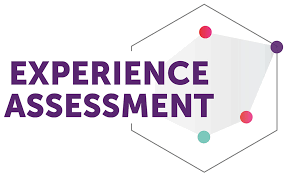science-technology

June 05,2025 • 4 min read
When Users Rebel: Lessons from a Failed UX Assessment

The Day Everything Fell Apart
It was just another routine ux assessment. Or so we thought. The client a mid-sized SaaS company had hired us to perform a standard usability audit of their B2B dashboard. Wireframes were analyzed, task flows dissected, heuristics cross-checked. Yet, within days of implementing our recommendations, the unthinkable happened: user engagement plummeted. Support tickets soared. The community forum turned into a war zone.
This was more than resistance to change. It was rebellion. And it taught us more than any successful UX project ever could.
What We Missed in Our UX Assessment
On paper, the ux assessment ticked all the boxes. We tested navigability, visual hierarchy, micro-interactions, and onboarding clarity. We followed every best practice—except one: we didn’t listen closely enough to the users' contextual intent.
Situational motivations that change how a user perceives content. In the same way, UX design must consider micro-behaviors and implicit expectations, not just surface-level UI flaws. Our team had optimized the design for efficiency, but unintentionally stripped away the flexibility users relied on.
Topical Mapping the UX Experience
This failure forced us to rethink how we perform a ux assessment. UX Topical Mapping. Just as a topical map outlines the macro and micro contexts of a subject, our UX map visualized:
-
Core User Goals (macro context)
-
Task Flows (micro contexts)
-
Emotional States (contextual bridges)
-
User Segments (source context variations)
By applying this model, we no longer assessed features in isolation. We evaluated how tasks, personas, and expectations interconnected a dynamic web of real user experiences.
Historical Data Isn’t Just for SEO
Another lesson it’s about how users engage with it. Similarly, in UX, user behavior logs, feedback loops, and support histories are more telling than first-click tests.
Had we considered six months of usage heatmaps or dug deeper into support transcripts, we would’ve seen the silent signals: user reliance on deprecated tools, dissatisfaction with rigid templates, or frustration with “smart” suggestions that were anything but.
Historical data, when applied to UX, forms a real-time sentiment index. Your UX assessment must factor this in before recommending bold interface overhauls.
The Hidden Cost of Ignoring UX Micro-Semantics
During our failed ux assessment, we had changed button labels from “Add New” to “Create Item.” A seemingly harmless edit. But the original label had a deep associative context with the users’ internal lexicon. It broke pattern recognition. This disruption though small was one of many micro fractures that triggered user rebellion.
Rebuilding Trust Through Supplementary UX Content
After the crisis, we rebuilt not by reverting everything, but by layering supplementary UX content—interactive guides, keyboard shortcuts, customizable toolbars, and contextual tooltips. Much like supplementary content in semantic SEO reinforces core ideas, these UX layers restored confidence without backpedaling on innovation.
This layered approach also supported different user personas: power users got their speed back, while new users enjoyed guided clarity. Everyone felt seen.
FAQs:
What is a UX assessment?
A UX assessment evaluates how intuitive, usable, and satisfying a digital product is. It uses user testing, heuristic evaluation, analytics, and design analysis to identify friction points.
Why do some UX changes fail despite being ‘best practices’?
Because they ignore historical usage data, emotional attachment to workflows, and micro-contexts. UX must align with how users think and behave—not just how designers want them to.
How do topical mapping and UX intersect?
Topical mapping helps uncover the hidden structure of user tasks, goals, and emotional states. When used in UX, it ensures every design element connects to a meaningful user intent.
Can UX assessments be predictive?
Yes, by leveraging user journey data and semantic behavioral modeling, assessments can forecast resistance, adaptation curves, and friction points.
What’s the biggest lesson from a failed UX assessment?
Never underestimate the semantic weight of user habits. A successful UX audit must respect both task flow logic and emotional continuity.
Final Thoughts: The Human Cost of Poor UX Prediction
When users rebel, they’re not just reacting to a layout they’re responding to a violation of trust, rhythm, and recognition. A failed ux assessment doesn’t mean the process is flawed it means the process needs to evolve.
Ali Danish Details
User Profile
- Full name
- Ali Danish
- Email address
- ali.danish@corp.tkxel.com
- Join Date
- 2025-05-12
- State
- City
- Pincode
- Address
- Follow us on Facebook
- Follow us on Twitter
- Website Name
- Bio